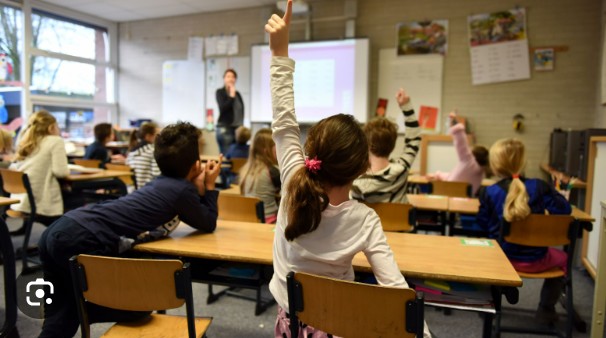Why engaged learners build resilience and grit
Why engaged learners build resilience and grit.
Greetings devoted teachers and individuals enthusiastic about the art and science of teaching. We're here to explore a crucial but often-overlooked subject: how and why motivated students develop grit and resilience. In this tour we will see how engagement interacts with grit and resilience to create a complex web that impacts student outcomes.
This topic's foundation is built on the straightforward idea of involvement. In pure form, engagement refers to pupils actively engaged in the educational process. With curiosity, they probe, posit, evaluate, and absorb new information. Teachers have a major role in this interaction, which has the capacity to foster work ethic and tenacity.
When we lift the resilience veil, we discover a mindset that extols mental toughness and adaptability. People who grow or develop resilience tend to view setbacks as important learning opportunities rather than being seen as catastrophic. It shapes students' mental frameworks so they may overcome obstacles.
Engaged students take ownership of their learning, bringing life to the classroom and lighting sparks of hardiness. Students with this mindset are better placed to display the fortitude necessary to steer their way through both intellectual and personal problems, in a sense, navigating difficult territory.
The sense of being a part of a shared journey in an engaged classroom is appealing. The environment of an engaging classroom supports social relationships, idea exchange, and problem-solving. Students' morale and confidence are raised as a result of their involvement, preparing them for any difficulties that may arise
Teacher behaviour is the key factor. In order to craft a rich educational experience, effective instructional methods that can combine knowledge and explore curiosities are best placed to create an involving learning environment.

Teachers who model perseverance set a concrete example for their students. They show that these traits are applicable in real life as well as in textbooks. We witness real instances of grit in action through these enhanced classroom experiences, which can influence student engagement even more.
The strong vibe of an engaged classroom allows students to connect to teacher led classroom discussion on a deep level. When learning is meaningful, students are more likely to strive to grasp at new concepts and retain new information better, reducing unnecessary stress on their working memory.
Students with a reserve of resilience and harbour less anxiety about results, for they've learned that there is more to education. Students with this mindset realize that understanding concepts and having the courage to explore unknown territories is what truly cultivates their learning. Such instances manifest the links between engagement and has the added benefit of lessening the burden on working memory.
Why engaged learners build resilience and grit - passionate teachers
When teachers are passionate about a particular subject, their students will pick up on this. A persistent engagement can be sparked by the inspiration that has been communicated, creating not only learners but also thinkers. Students' minds are much better prepared to stretch beyond comfort zones and succeed facing any new challenge with confidence.
Teaching to mastery is a principle of instruction that emphasises the importance of fully comprehending a concept. Mastery maps out a path of excellence, giving students the confidence in their own abilities to overcome any perceived obstacles that clears the way for knowledge acquisition, based on a solid foundation of teacher led instruction.
Students that are engaged learners are more self-assured in their learning and their understanding of conceptual knowledge, and best prepared to face perceived academic obstacles. In short, students with high rate of resilience are more able to overcome setbacks.

Students who are engaged learners may begin to see themselves as active rather than passive participants in the learning process. This change effectively lessens behavioural issues caused by a lack of engagement or being unable to access the curriculum due to learning difficulties.
Engagement is attainable, but it is best achieved by dedication to effective teaching practise. Teachers have a responsibility to create a stimulating environment that motivates students to actively participate and engage in the learning process by incorporating interactive teaching approaches.
Why engaged learners build resilience and grit - transfer to life skill
When teachers are skilled in addition to informed, they can expertly control the pace of their classrooms, which greatly increases student engagement. Student learning is strengthened as a result.
In addition to excelling academically, resilient students with a dash of grit can transfer that confidence and resolve to other areas of life. They take responsibility for their learning process, recognise the value of perseverance, and view failures as learning opportunities rather than obstacles. In essence, they are equipped to successfully traverse the real world that awaits beyond the classroom.
Teachers act as compass points for their students as they travel the path of learning. Active classrooms that embrace landscapes of big ideas and open perspectives have a greater opportunity to foster resilience and resolve. This embrace possibly captures the essence of why motivated and engaged students do well in both school and life - essentially because they have bravely faced perceived academic difficulties and through calm and solid teacher led guidance have emerged at the other end with stronger skills and a greater sense of determination.
A student's approach to learning is significantly influenced by the way a teacher runs the classroom. By placing a strong emphasis on interaction, educators are giving students the tools they need to build knowledge that stands as tall as the sky.

Engaging, well designed and consistent instructional strategies as outlined in a scope and sequence can help students realize their potential and boost their self-confidence. Resilience and grit become students' partners as they take charge of their own learning process, resulting in academic and personal improvement.
A motivated student is inherently drawn to the excitement of discovery. Academic difficulties can potentially be transformed by this curiosity to fascinating puzzles to be solved rather than difficult or onerous jobs that need to be completed.
High-value teaching practises depend not just on information accumulation but also on the capacity to spark a learning revolution. Resilient students can be shaped by teachers who have the skills to actively engage, challenge, and inspire their students. A dramatic shift in the dynamics of the classroom can occur as a result.
Why engaged learners build resilience and grit - conclusion
In conclusion, students who actively participate in their own education have the opportunity to develop a mindset that views perceived setbacks as opportunities for academic and personal growth. A cornerstone and foundation of both good learning and lifetime achievement is engagement. This leads naturally to the highly sought after personal traits of resiliency and tenacity.
We have explored the essence of engagement, resilience, and grit as well as their importance in the changing landscape of education.
When these pillars of teaching excellence in line with Rosenshine principles are established, the beauty of learning emerges— a world where knowledge is infinite, curiosity is fostered, difficulties are welcomed, and every learner has an equal chance of success.
Follow this link to learn about strategies that can be used in classrooms to foster resilience.
Uploaded 10/2023
